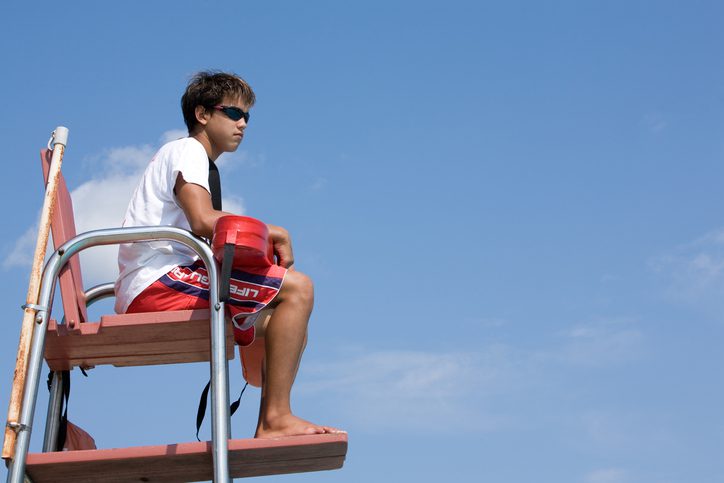Overview of Lifeguard Courses
Lifeguard courses are designed to train participants in the following areas:
- Water safety and rescue techniques
- Emergency response protocols
- CPR and first aid
- Use of life-saving equipment
Offered by organizations such as the American Lifeguard USA, and local recreation centers, these courses combine theoretical knowledge and hands-on practice to prepare you for real-life emergencies.
Lifeguard courses are essential for anyone pursuing a role in aquatic safety. They provide the skills and certification required to ensure the well-being of swimmers in pools, lakes, beaches, and water parks. If you’re searching for lifeguard courses near me understanding what to expect will help you prepare for success and make the most of your training experience.
Prerequisites for Lifeguard Courses
Before enrolling, ensure you meet the basic requirements. While specific prerequisites may vary by provider, most courses require:
- Age Requirement:
Participants must typically be at least 15 years old for standard lifeguarding courses. Advanced certifications, like waterfront or beach lifeguarding, may require candidates to be 16 or older. - Swim Test:
A swim test is conducted to assess your swimming abilities. Common requirements include:- Swimming 300 yards continuously using freestyle and breaststroke.
- Retrieving a 10-pound object from a depth of 7–10 feet.
- Treading water for 2 minutes without using hands.
- Physical Fitness:
Lifeguarding is a physically demanding role, requiring strength and stamina.
Structure of Lifeguard Courses
Lifeguard courses typically consist of three main components:
1. Classroom Instruction
Theoretical knowledge forms the foundation of lifeguard training. Topics include:
- Understanding water safety guidelines
- Legal responsibilities and ethics of a lifeguard
- Recognizing and preventing drowning incidents
2. Water-Based Training
Practical skills are honed during pool sessions or open-water training, including:
- Performing active and passive rescues
- Towing and extricating distressed swimmers
- Surface dives and underwater searches
3. Emergency Preparedness
You’ll also practice responding to emergencies through simulated scenarios, covering:
- Cardiopulmonary resuscitation (CPR)
- Automated external defibrillator (AED) usage
- First aid for injuries such as cuts, fractures, and heat-related conditions
What Will You Learn?
Lifeguard courses are designed to equip you with a wide range of skills, including:
- Rescue Techniques:
Learning how to approach and assist struggling swimmers, unconscious victims, and individuals in panic. - CPR and AED Skills:
Understanding how to perform chest compressions, rescue breathing, and operate an AED during cardiac emergencies. - First Aid:
Treating common injuries and illnesses, ensuring you can handle both minor and severe incidents. - Observation and Vigilance:
Mastering scanning techniques and situational awareness to prevent accidents. - Communication and Teamwork:
Working effectively with fellow lifeguards and providing clear instructions to swimmers during emergencies. - Confidence and Leadership:
Developing the ability to stay calm under pressure and take charge during critical situations.
Course Duration and Certification
Lifeguard courses typically last 20 to 30 hours, spread over several days or weekends. Upon successful completion, you’ll receive a certification that is valid for two years. Some certifications may require additional training, such as open-water or waterfront lifeguarding.
Tips to Succeed in Lifeguard Courses
- Practice Swimming:
Regular swimming practice helps build endurance and improves your confidence in the water. - Study Course Materials:
Review the manuals and videos provided by your training organization to reinforce your understanding. - Stay Focused:
Pay close attention during both classroom and practical sessions to master the concepts and techniques. - Ask Questions:
Engage with your instructors to clarify doubts and gain deeper insights. - Be Physically Prepared:
Incorporate strength training and cardio exercises into your routine to enhance stamina and agility.
Where to Find Lifeguard Courses Near Me?
Finding a course near you is easy with online searches or inquiries at local facilities such as:
- Community pools
- Recreation centers
- Universities and colleges
- National organizations like the American Lifeguard USA
Ensure the program you choose is accredited and meets the standards for lifeguard certification.
Benefits of Lifeguard Training
Enrolling in a lifeguard course offers more than just a certification. Key benefits include:
- Developing life-saving skills applicable in various situations.
- Enhancing physical fitness and endurance.
- Building leadership and communication abilities.
- Opening doors to rewarding job opportunities in aquatic safety.
Finalization
Enrolling in lifeguard courses near me is a transformative step toward becoming a skilled and confident lifeguard. By understanding what to expect, preparing thoroughly, and fully engaging in the training, you’ll be ready to handle the challenges of this vital role. Lifeguarding is not just a job—it’s a responsibility to protect and save lives, making a meaningful impact in your community.

